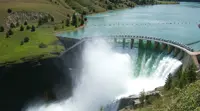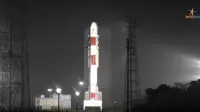How much fertiliser is too much for the climate?
14 Jun 2014
Helping farmers around the globe apply more-precise amounts of nitrogen-based fertilizer can help combat climate change.
In a new study published in this week's Proceedings of the National Academy of Sciences, Michigan State University researchers provide an improved prediction of nitrogen fertilizer's contribution to greenhouse gas emissions from agricultural fields.
The study uses data from around the world to show that emissions of nitrous oxide, a greenhouse gas produced in the soil following nitrogen addition, rise faster than previously expected when fertilizer rates exceed crop needs.
Nitrogen-based fertilisers spur greenhouse gas emissions by stimulating microbes in the soil to produce more nitrous oxide.
Nitrous oxide is the third most important greenhouse gas, behind only carbon dioxide and methane, and also destroys stratospheric ozone.
Agriculture accounts for around 80 per cent of human-caused nitrous oxide emissions worldwide, which have increased substantially in recent years, primarily due to increased nitrogen fertilizer use.
''Our specific motivation is to learn where to best target agricultural efforts to slow global warming,'' said Phil Robertson, director of MSU's Kellogg Biological Station Long-term Ecological Research Program and senior author of the paper. ''Agriculture accounts for 8 to 14 percent of all greenhouse gas production globally. We're showing how farmers can help to reduce this number by applying nitrogen fertilizer more precisely.''
The production of nitrous oxide can be greatly reduced if the amount of fertilizer crops need is exactly the amount that's applied to farmers' fields. Simply put, when plant nitrogen needs are matched with the nitrogen that's supplied, fertilizer has substantially less effect on greenhouse gas emission, Robertson said.
Iurii Shcherbak, lead author and MSU researcher, noted that the research also informs fertilizer practices in underfertilised areas such as sub-Saharan Africa.
''Because nitrous oxide emissions won't be accelerated by fertilizers until crop nitrogen needs are met, more nitrogen fertiliser can be added to underfertilised crops with little impact on emissions,'' he said.
Adding less nitrogen to overfertilised crops elsewhere, however, would deliver major reductions to greenhouse gas emissions in those regions.
This study provides support for expanding the use of carbon credits to pay farmers for better fertilizer management. Carbon credits for fertiliser management are now available to U.S. corn farmers. This paper provides a framework for using this system around the world.
The research was funded by the National Science Foundation, the Department of Energy's Great Lakes Bioenergy Research Center and the Electric Power Research Institute. Robertson's work also is funded in part by MSU AgBioresearch.
























